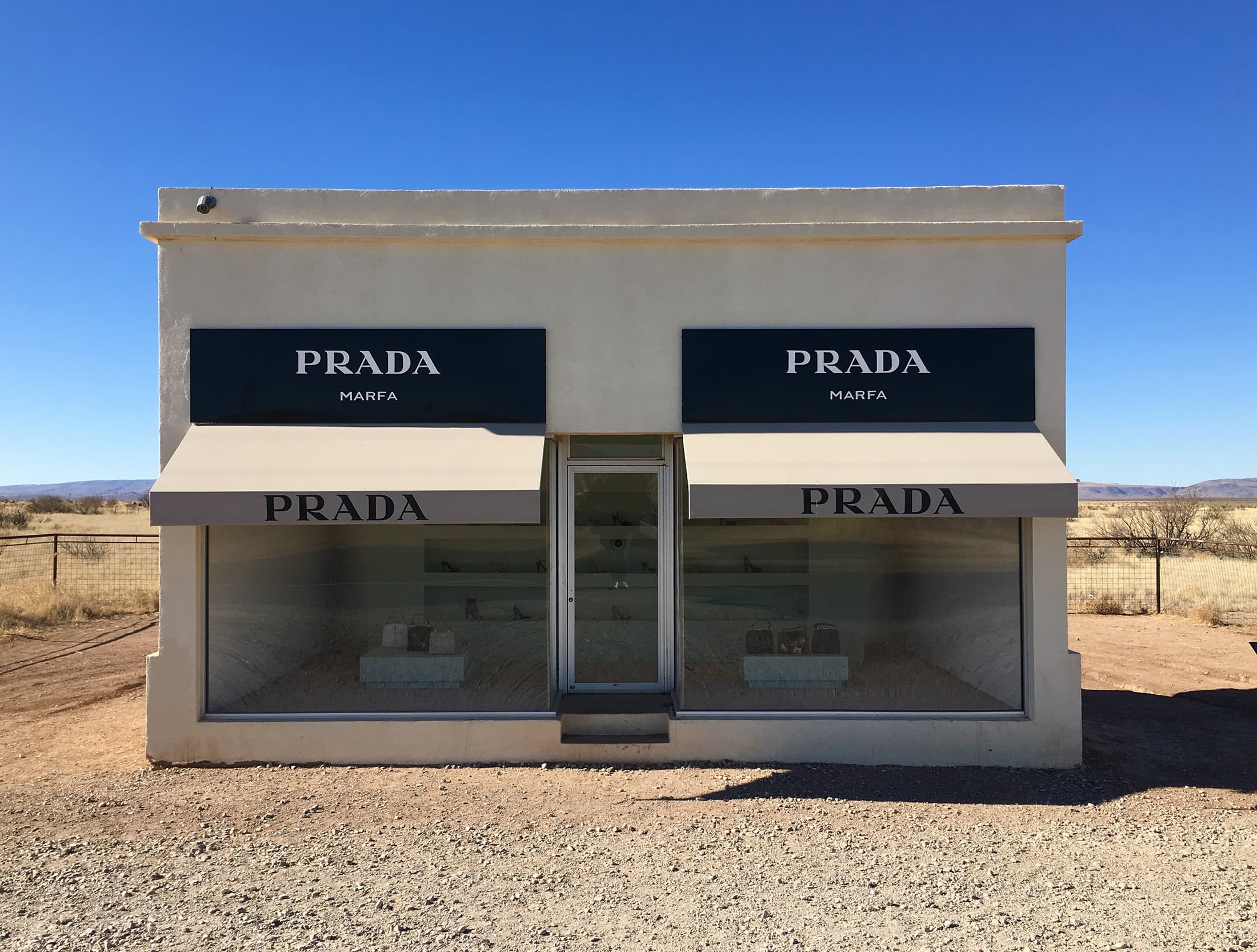Mixing Paintings, Sculptures, Coats, Leather Bags and Sneakers Where Art, Culture, and Commerce Intersect
Across the street near the corner of Crosby and Howard Streets just a block away in the edge of New York’s Chinatown on one early evening, a series of TV monitors mounted on a wall displayed their colorful luminosity behind the metal grill front window.It is hard to immediately figure out from this distance if this space is an art gallery, a fashion boutique, or both.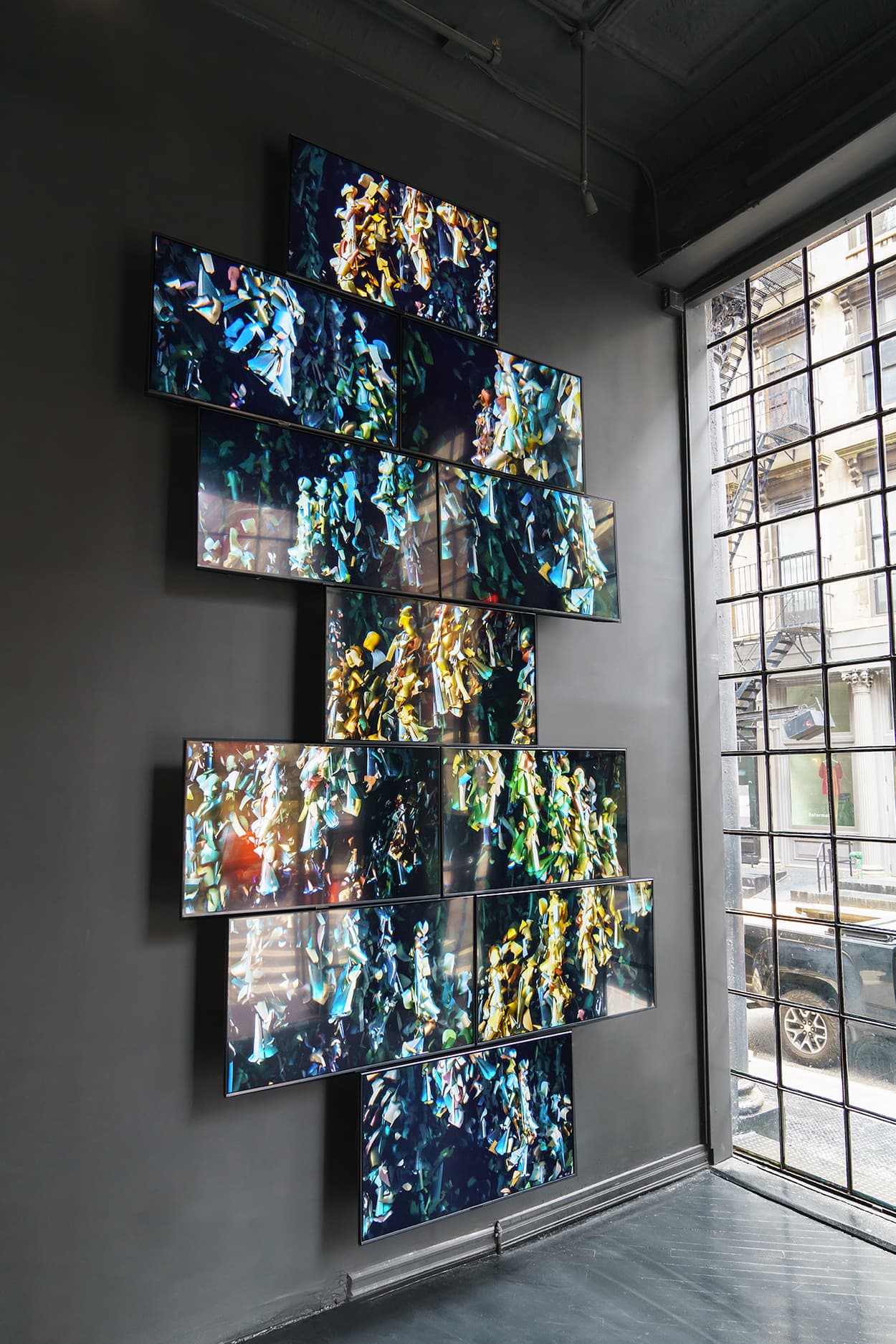
MAISON MARGIELA intends to “create non-arbitrary conversations between the voices of the artists and the visual identity of the house.”
In a way, this isn’t much of confusion as space here is an actual store as much as it is an art gallery in a broader sense. Opened in November 2019 as a Transitory Concept Store pop-up by the French brand MAISON MARGIELA, this Soho boutique, now a permanent store, serves as a directional location for the house. With the initial plan for five exhibitions of different artists, MAISON MARGIELA intends to “create non-arbitrary conversations between the voices of the artists and the visual identity of the house.” Two American artists – Jessi Reaves and Tabor Robak – inaugurated the store’s first installment. They highlight the design approach of deconstruction, both central tenets as a heritage of Maison Margiela and integral to Reaves’ work that intersects elements of art and design to break rigid notions of the functionality of objects. Galliano invited Reaves to create four site-specific deconstructed sculpture-furniture pieces made of a patchwork of different leather materials as part of the set for the Spring Summer Artisanal couture show in January 2018 at the brand’s Paris headquarter.Tabor deployed a mini jumbotron, effectively effacing the easy boundaries between reality and virtual reality
Now, Reaves’ ottoman sculpture-furniture provokes the idea of taking apart familiar pictures and diversely reconstituting them in the same way that Galliano performed the precise dissections on the clothes and products available for purchase. Meanwhile, Tabor deployed a mini jumbotron, effectively effacing the easy boundaries between reality and virtual reality. In addition, a silver mirrored runway hung on the ceiling and a sound cone with the designer’s voice in a podcast The Memory of … explaining his thinking further and pushing the customer deeper into an enhanced store brand experience. The London-based video artist Marco Brambilla installed a wall consisting of 11 TV monitors with an artwork titled Nude Descending a Staircase No. 3. The artist transformed Marcel Duchamp’s 1912 modernist painting depicting a body in motion into a panorama of moving 3D animated figures going down an invisible staircase with the aid of a piano score. Brambilla’s video was projected onto the façade of Maison Margiela’s future flagship in the Miami Design District in early December 2020.It is now directed towards the customers to submerge them into the house’s overall aesthetic sentiments.
Juxtaposing the similarity in the thinking of independent artists and that of the designer, John Galliano is a crucial marriage of art and art of fashion design. It is now directed towards the customers to submerge them into the house’s overall aesthetic sentiments. Entering any luxury stores globally after the pandemic has receded and reopening is on a full-throttle drive ahead, entering into a privileged shared space. These spaces brands no longer leave to customers to browse products alone. A painting or a sculpture – whether the artwork is part of a collaboration with particular artists or not – is an innovative manner to continue the brand’s message. Brand propaganda now disguised as artwork serves as soft diplomacy, luring and capturing consumers into orbit.They are part of the central narrative brands want the consumers to experience.
Fashion shows are just one part, a component of the whole gamut of fully loaded creative activities each season for luxury fashion brands. It is also apparent that luxury fashion’s art collaborations are becoming a norm in the engine driving the heart of the luxury business today. These artworks are not supplementary decorations; they are part of the central narrative brands want the consumers to experience.The examples of the art-luxury fashion axis are endless.
Art transforms the aspirations of luxury brands into a super-reality within these content-commerce physical sites, anchoring an environment beyond what the digital can offer for the ever-growing crescendo of luxury goods. The examples of the art-luxury fashion axis are endless. This changes the arcana of what a store has always been – just a place to purchase goods. Now the stores are places to experience the brand before getting down to looking at the new stuff. Adding to those sulfurous displays of products are walls with art and floors with sculptures; even a sofa and a coffee table demonstrate their ‘art’ qualities. Adding the alluring elements of art to expensively made products is a clear choice. The value of these arts will underpin the importance of a leather slingback, a gabardine jacket, or a leather crossbody bag.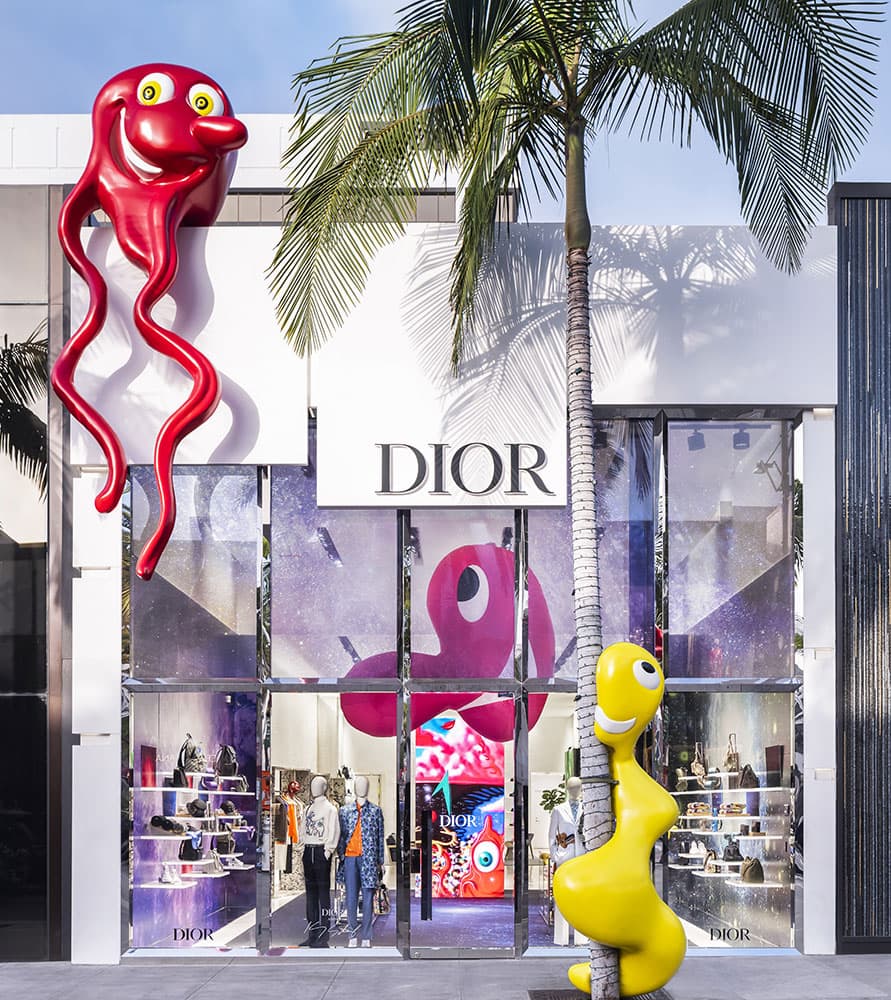
The actual presence of artworks is how the runway experience is recast and simulated anew at the retail level with echoes of the intent of the creative direction for the season.
In a series of pop-up shops mounted across the global retail network, DIOR began to roll out within these boutiques special sections devoted solely to the arrival of the products from the pre-fall 2021 collection. These outposts have decorations to simulate an environment of art fashion similar to that of the pre-fall show that audiences experienced in early December 2020. The actual presence of artworks is how the runway experience is recast and simulated anew at the retail level with echoes of the intent of the creative direction for the season. The first installation occurred at the Holt Renfrew Vancouver in the Skybridge crossing in the second week this May. A dark blue colorful psychedelic carpet and large scale sculptures such as a giant pair of yellow eyes recreate Scharf’s atmosphere of Surrealism and science fiction, principal elements in his art but also on some of the designs of the clothes and bags on display for sale like a coat in colorful print or a cross body psychedelic-patterned Saddlebag.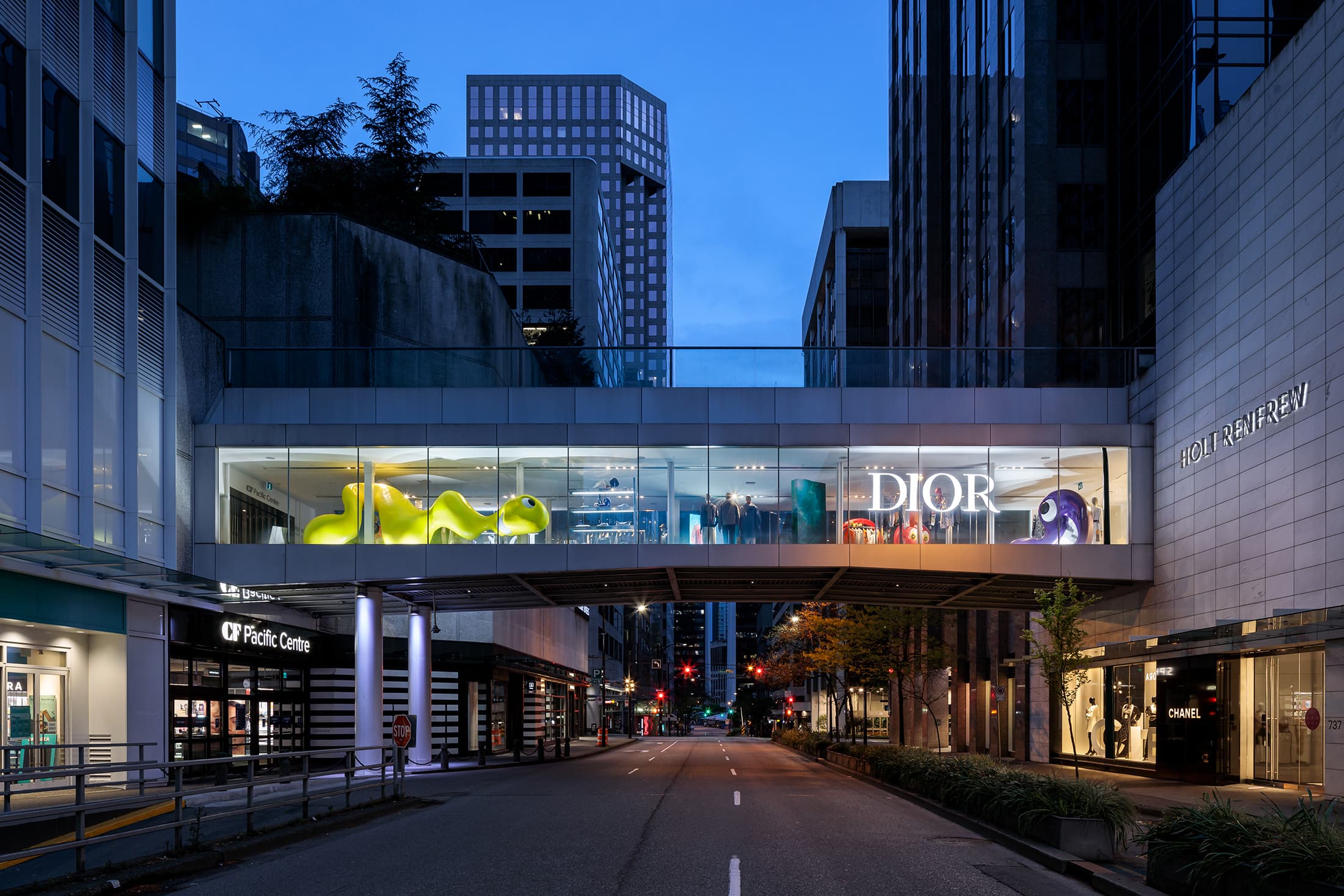
The display of artwork linked the products again to a grander slope in the culture scale at the store itself.
The notion and motion of entertaining the potential consumers at every stage of the induction process is part and parcel of the creative ways brands have developed a comingle environment keeping an eye on the aesthetic feel and closing the sale. The display of artwork linked the products again to a grander slope in the culture scale at the store itself. Beyond the actual purchase of expensive shoes or bags, the consumers buy the aura of culture from the artwork on the walls. In a way, this reverts to the analog era, where appeals directly to the senses were prime directives. “How can we mix clothes with art, with music, and with food – have a community bringing in very creative things,” Dries Van Noten said in a video describing the intimacy of his new LA boutique. Located in two houses on La Cienega Boulevard – called Big and Little Houses – separated by a garden/parking lot. Opened last October, the idea is to house the current and a few reissued men’s and women’s collections in the Big House alongside the books that have inspired fashion collections. The designers engaged local LA artists to hand-paint the walls in the different rooms.
The activities of the movies keep company with the upbeat and energetic physical clothes – hanging nearby – designed to encompass the artist’s intended ethos.
Van Noten showed the art photographs by the Dutch photographer Viviane Sassen, who had shot images for the spring 2021 collection presentation last September. Lye’s and Sassen’s art served as crucial departure points for this spring collection. Now, customers can see the actions in Lye’s experimental films projected onto the white walls. The activities of the movies keep company with the upbeat and energetic physical clothes – hanging nearby – designed to encompass the artist’s intended ethos. Hopefully, these constellations of forces will make the shopping experience more immersive, meaning in a strange way adding the live art to the sentiment and feel beyond just the clothes or bags or footwear. It’s a paradigm shift in extending the creativity of the fashion brand to meet the consumer public. How stores will look soon is in constant flux as brands evaluate how to create ‘the experience’ for consumers at their physical stores. More than ever, the crisis of the pandemic year saw a severe reduction of stores of all kinds. Department stores and independent boutiques all over the globe retrenched, especially in the U.S.Brands are now looking specifically at fostering a more creative environment within these stores.
Brands are now looking specifically at fostering a more creative environment within these stores, including the plans to transform each location into beacons. These physical outposts now are brand extensions, encompassing the pivots of core brand aesthetics. Inside the store, the art feels like it’s an extension of the fashion show, now converted into segmented immersive experiences conducive to driving the closing of a sale. It is part of the creative storytelling of each season as the clothes, the sneakers, and the small leather goods all require a new story even if the merchandise feels more familiar than new. In September 2017, the California artist Ruby Sterling who had a decade-long work collaboration with Raf Simons, the then chief creative officer of CALVIN KLEIN, decorated the American brand flagship store on Madison Avenue with his signature work of colorful fabrics hanging from the store’s double-height ceilings. That was in addition to Sterling’s work in providing the art mood for Simons’s debut fashion shows and giving the company headquarters an art lift. Shoppers like those who attended the fashion show at the New York headquarters or in the financial district can directly share a bit of the designer’s aesthetics. It was one of the most intensive art-fashion templates in recent years, affecting the entire Calvin Klein aesthetic. No other brands have perfected the seamless fusion of art, luxury, and commerce at such a scale and a pace that virtually leaves little room for competition than LOUIS VUITTON. Takashi Murakami, Richard Prince, Yayoi Kusama, and Stephen Sprouse are just a few of the legendary artists. They had created massive commercial work in making sell-out handbags at an unimagined scale for the world’s biggest luxury fashion brand.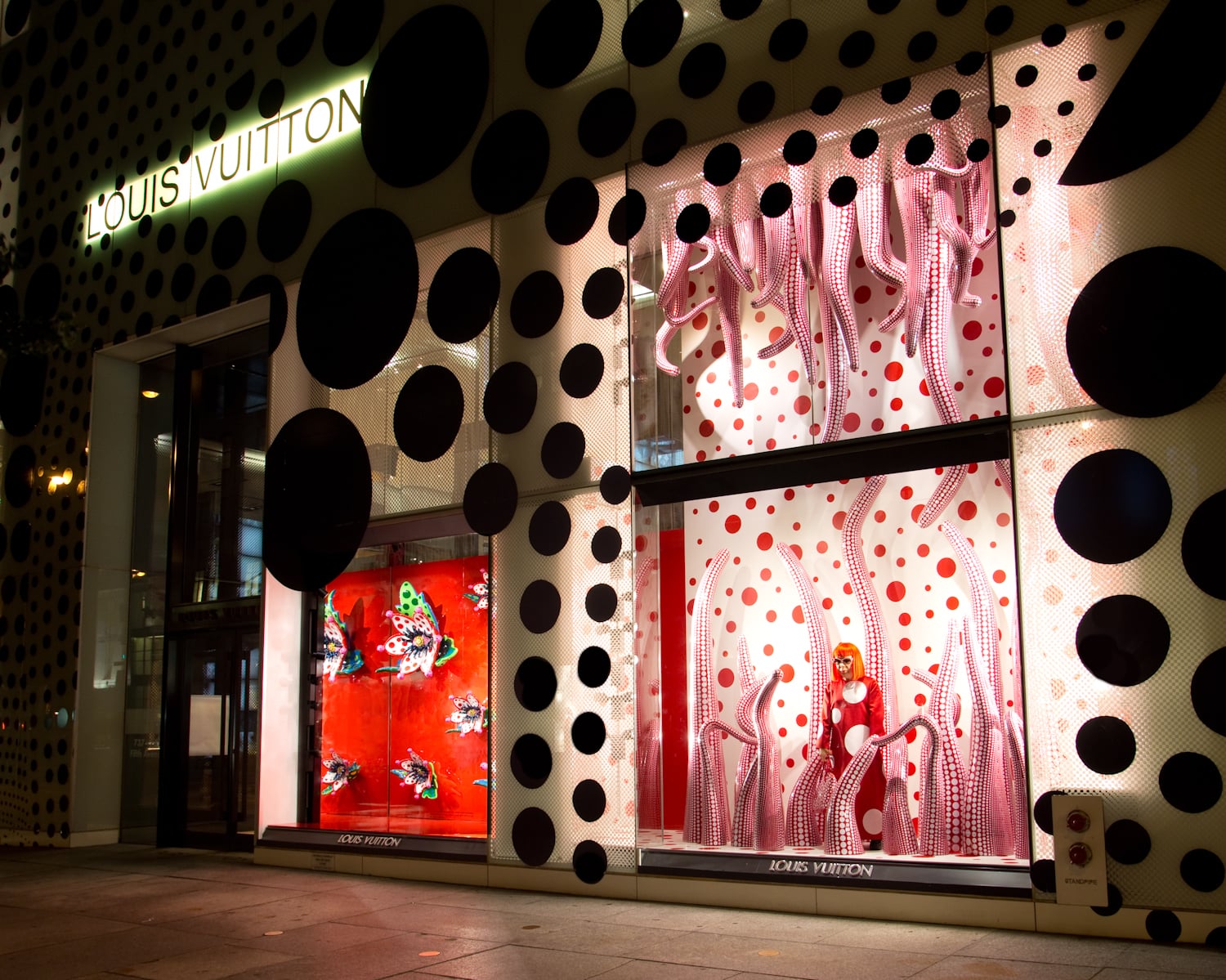
Yet while collaborations with artists abound at LOUIS VUITTON, there is a separation in how the consumer experiences art and commerce at the LOUIS VUITTON retail level. Art itself does not belong in proximity to products even if its derivatives result from projects with artists.
In January 2006, LOUIS VUITTON opened the seventh floor of the Champ Élysées megastore as an ‘Espace LOUIS VUITTON solely to exhibit art from new and emerging artists with three years showcases. Vanessa Beecroft inaugurated the Paris space with her VB LV exhibition with a performance of 30 naked models sitting in arranged formations, one spelling the brand LV logo.Cross-sections of Romanian art in the past forty years, from symbols of resistance to dictatorship to present-day globalization.
Conceived as independent art spaces, the Espace encourages creating new contemporary cultural and artworks as installations within one of the global flagships but completely separate from the retail section of the boutique. In 2013, the Espace Champs Élysées presented Romanian Scenes, cross-sections of Romanian art in the past forty years, from symbols of resistance to dictatorship to present-day globalization. Romanian artists included Dan Beudean, Adrian Ghenie, Sergiu Toma, Serban Savu and Mircea Suciu. Espace Tokyo followed in 2011 at the Aoki Omotesando building, Espace Venice in 2013, Espace Munich in 2014, Espace Beijing in 2017, Espace Seoul in 2019, and the newest Espace Osaka at the Midosuji Maison this May with an exhibition of the abstract expressionist painter Joan Mitchell and the minimalist Carl Andre. Rather than monetization, these Espaces held exclusively curated exhibitions revolving around the theme of travel as an added value for the brand’s consumers, endearing them to the notion that the house is a leader in all realms of creativity.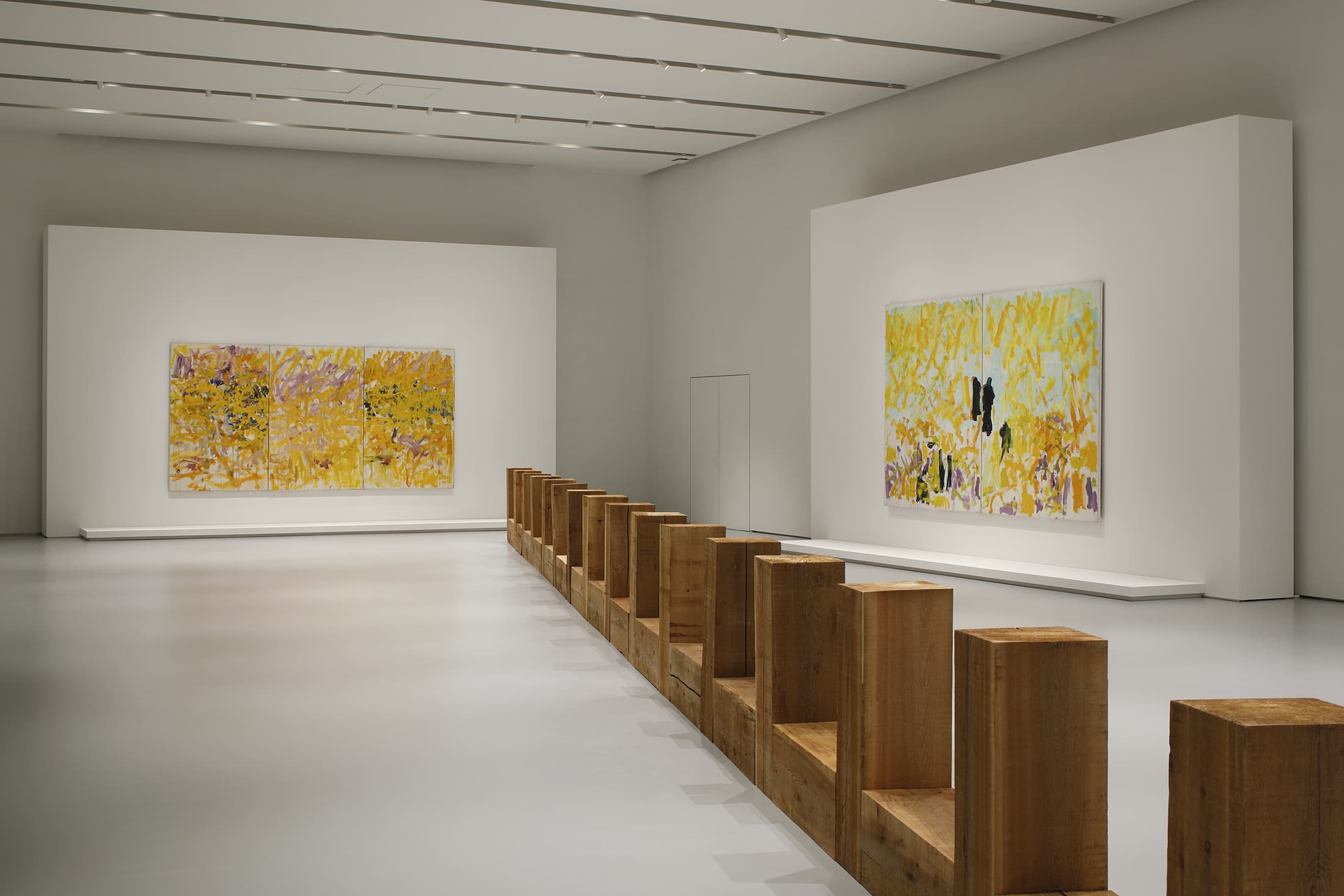
At LOUIS VUITTON, art is integrated into the fundamentals of the business rather than as temporal collaborations.
At LOUIS VUITTON, art is integrated into the fundamentals of the business rather than as temporal collaborations. Art intertwines with the value of commerce. The art is woven deep into the products, such as the Fall 2021 women’s collection enhanced with the pictorial depictions of design signatures from Atelier Fornasetti. Models wore cocoon coats and dresses embroidered in graphic motifs of ancient statuary inside the Louvre’s Denon wing amidst real Roman, Greek, and Etruscan sculptures. But, these Espaces at selected LOUIS VUITTON flagships globally separate the experience of art from the experience of luxury commerce. It helps, though, for the buying public, especially young people, to look and absorb these connections to art and accept these dual roles at LOUIS VUITTON. PRADA Marfa is the only art sculptural installation of a fake concept store standing alone on U.S. Highway 90 in the small town of Valentine, northwest of the city of Marfa, that the Scandinavian artist duo Michael Elmgreen and Ingar Dragset inaugurated on 1 October 2005. PRADA Marfa is a one-room white stucco exterior with a glass window and a non-functioning door. Inside the small space, three rows of right-footed shoes sat on light green shelves in the back, and two small stands at the front end with several handbags with no bottoms, purposely to prevent future lootings. Of course, the PRADA black logo appears on the storefront window and awning.This small art-boutique outpost is pure art imitating retail reality out in the middle of nowhere.
PRADA Marfa’s existence predates any of the inclinations and strategies today as luxury brands so readily deploy art in the conception of their fashion then follow at the retail level. This small art-boutique outpost is pure art imitating retail reality out in the middle of nowhere.